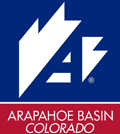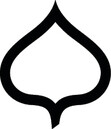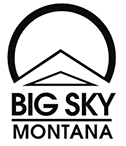There’s Snow Business Like Predicting the Weather
The honest answer is: I have no idea.
Predicting snowfall totals and/or conditions for, say, January at this remote (early September) is fraught with danger. An old meteorologist friend of mine once said that for forecasting weather more than three days out you might as well throw a dart at a wall filled with various predictions; you’d have a better chance of getting it right.
That was in the 1980s and weather forecasting has gotten a bit more sophisticated in the interim, with predictions up to 10 days out being somewhat accurate. Still, it’s a tough task to suss out what ski and snowboard conditions might be like for the winter when you’re sitting in an air-conditioned house nearly three weeks before the autumnal equinox.
But let’s give it a shot, OK?
Long, cold and snowy
The most fun — and, for our purposes as skiers and snowboarders, most enticing — winter forecast comes from the Farmer’s Almanac, which for the past 200 years has used “a mathematical and astronomical formula” to make its predictions.
“Our long-range formula is pointing toward a very long, cold and snowy winter (in the contiguous United States),” the Farmer’s Almanac reports.
Specifically, look for “typical winter temperatures and wet (weather) in the Pacific Northwest, “mild temperatures and average precipitation” in the Southwest, “teeth-chattering cold and plentiful snow” in the northern Rockies, “stinging cold and average precipitation” in the southern Rockies, “cold and white” in New England and New York and “chilly wintry mix” in the Atlantic and northern Southern states.
Up in Canada, the news from the Farmer’s Almanac is much the same with “below-average temperatures for most of the country” and specifically “typical winter temperatures and wintry mix” in British Columbia, “teeth-chattering cold and average snowfall” in Alberta, “biting cold and above-average snow” for the Great Lakes region and “cold and snowy — and unusually snowy in February” for Quebec.
“We stand by out forecast,” the Farmer’s Almanac says.
Higher than average temps
The number crunchers and prognosticators at the National Oceanographic and Atmospheric Administration see things a bit differently: America’s official weather watcher is predicting “higher than average temperatures” across the board this winter, with the exception of Montana, which is expected to be “below average”.
As for precipitation, things get less predictable because the NOAA hasn’t determined whether this winter’s developing El Niño pattern — they’re saying it’s a 70 percent certainty that El Niño will affect the weather over the next several months — will be a weak one, which means a relatively dry winter, particularly in the West, or a moderate one, which could bring average or better precipitation to the West and Southwest, but leave the Rockies in a so-so state snow-wise and below average in the New England resorts.
All I can say is stay tuned.
Featured Resorts

Killington Resort

Pico Mountain

Mammoth Mountain

Palisades Tahoe

Arapahoe Basin

Aspen Snowmass

Sunday River

